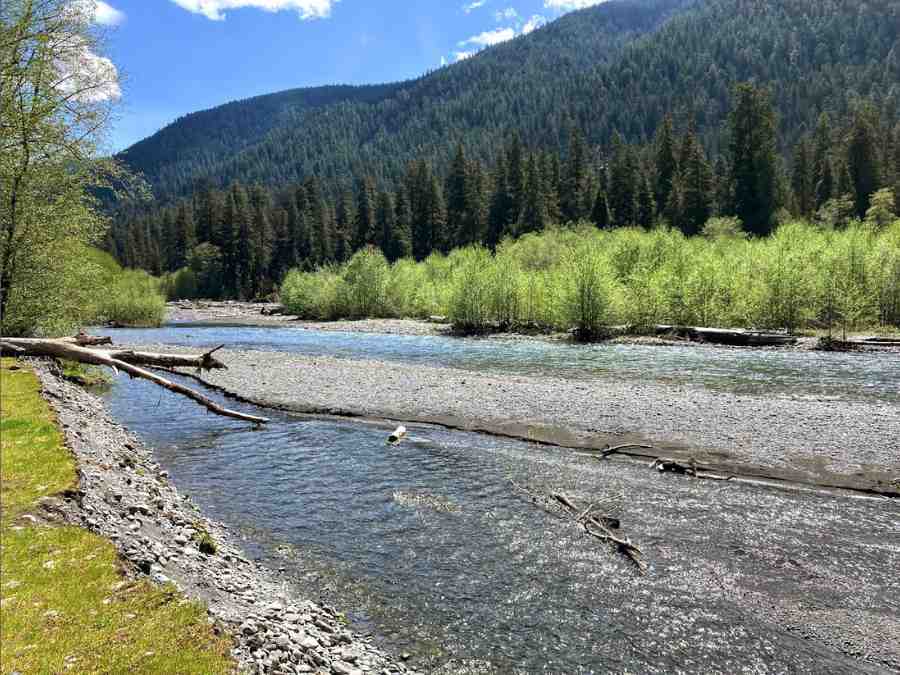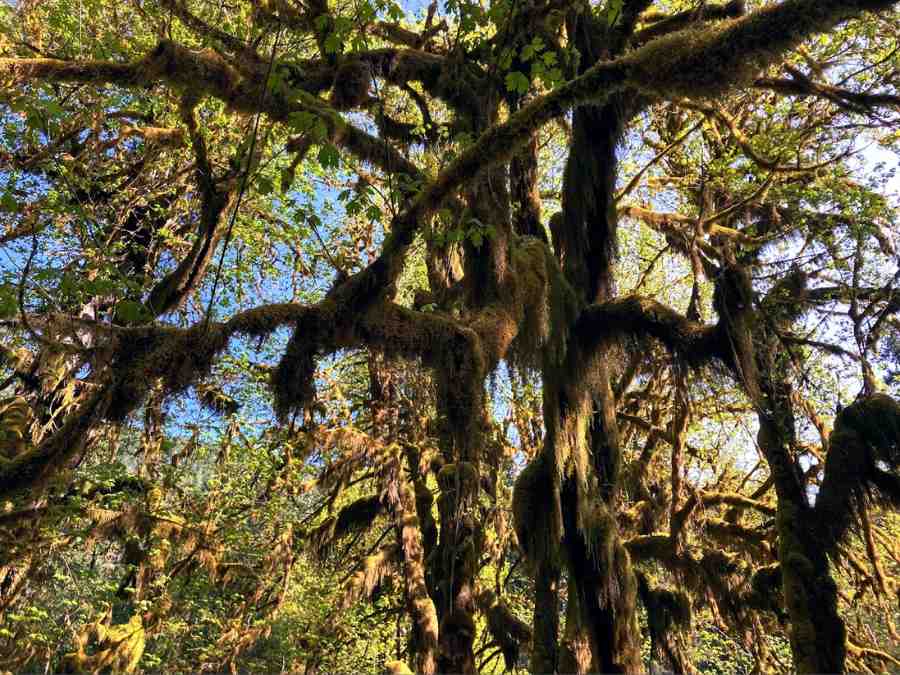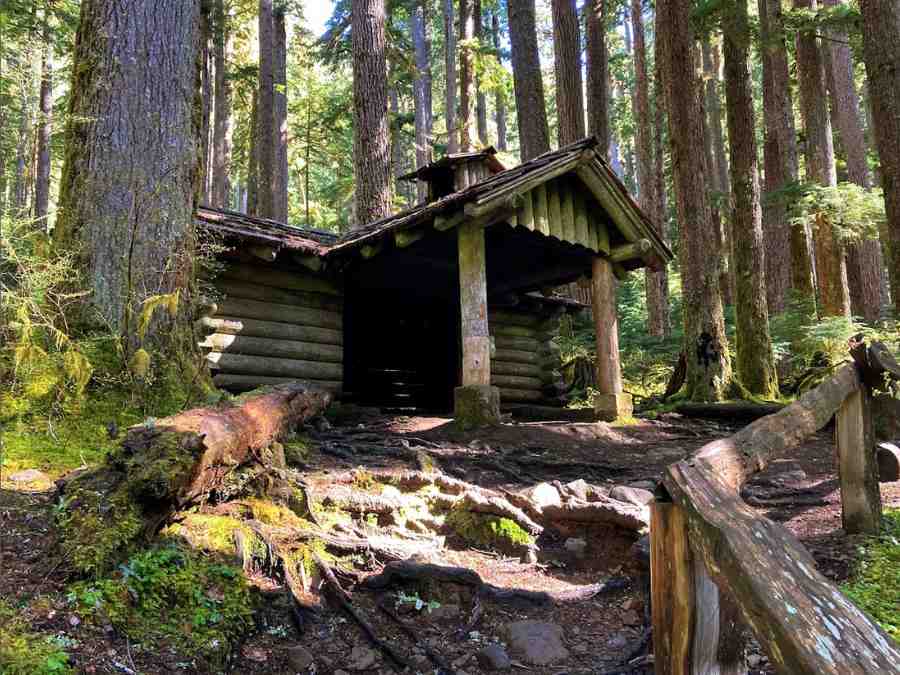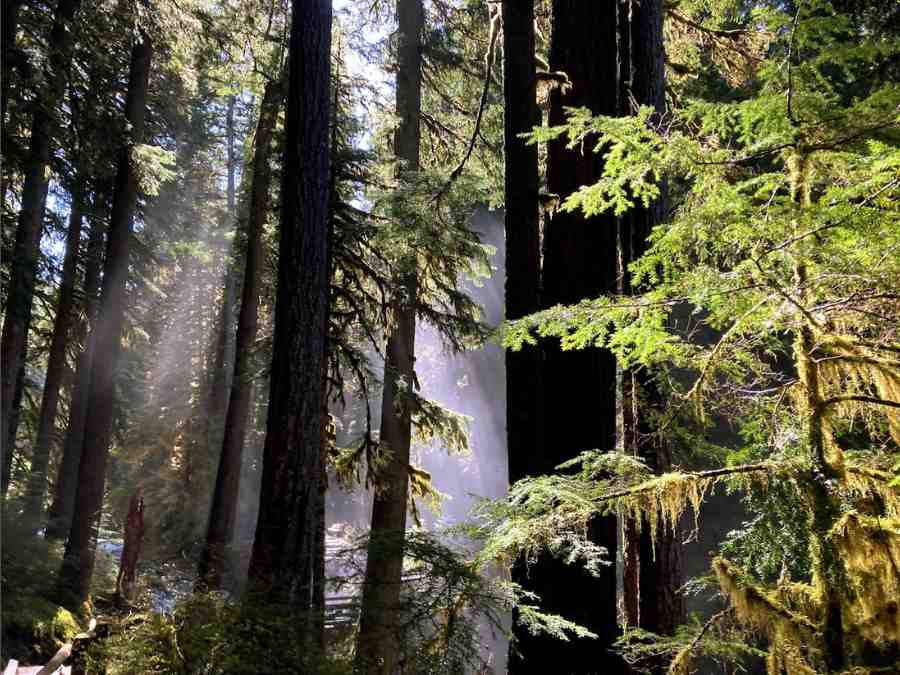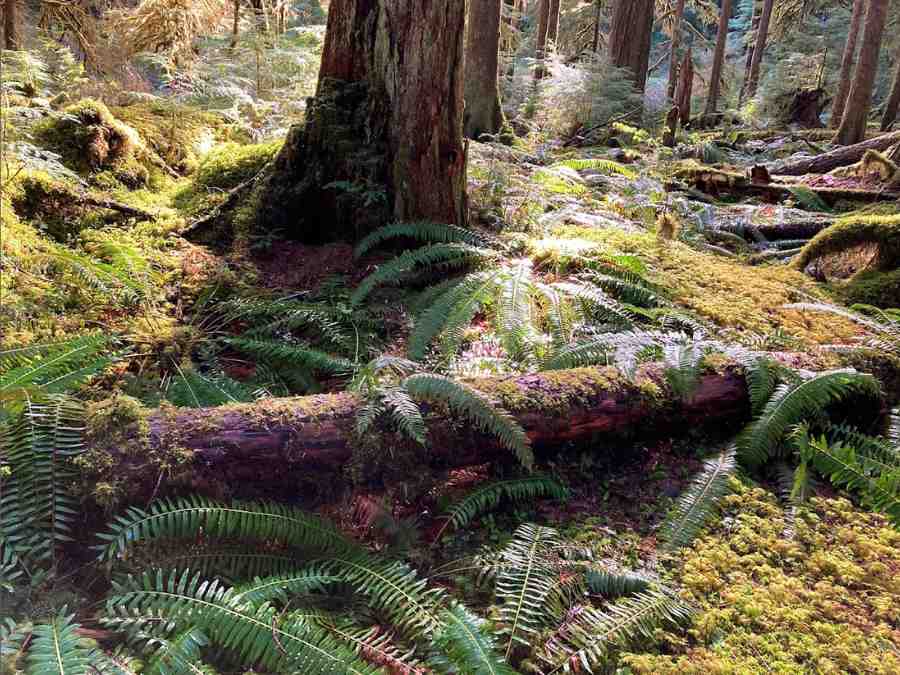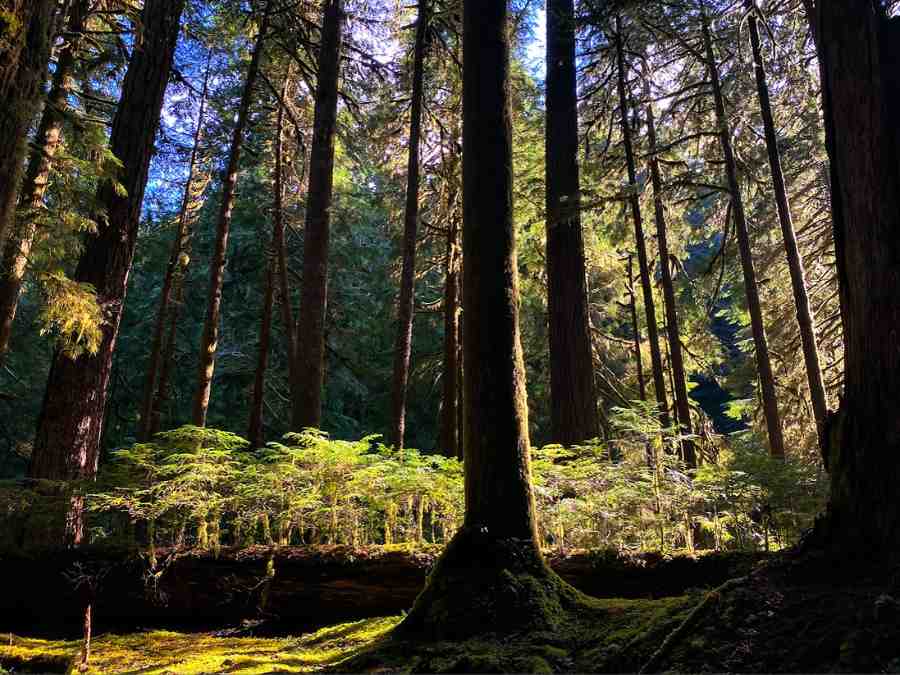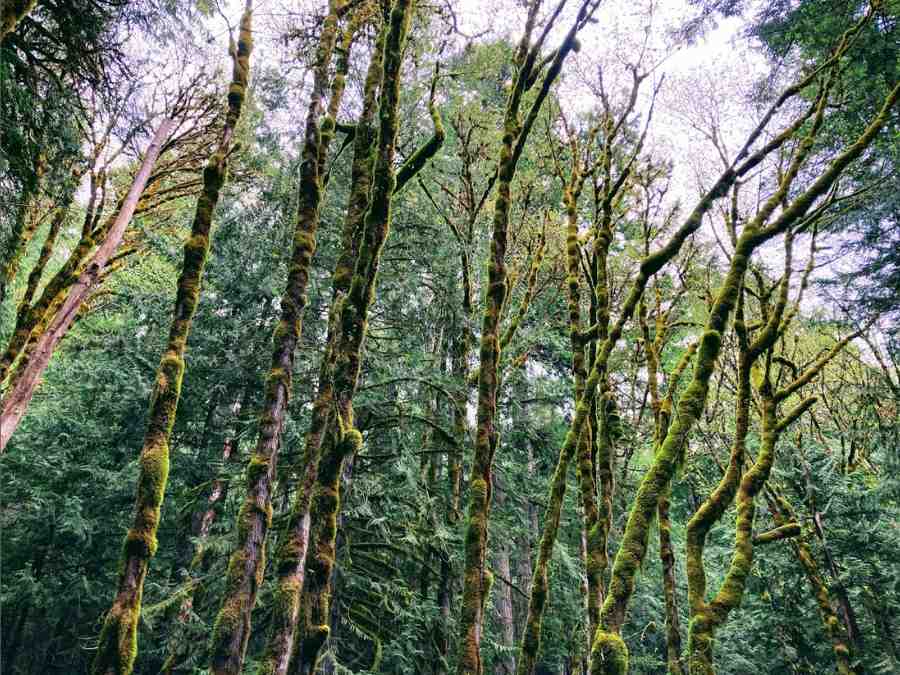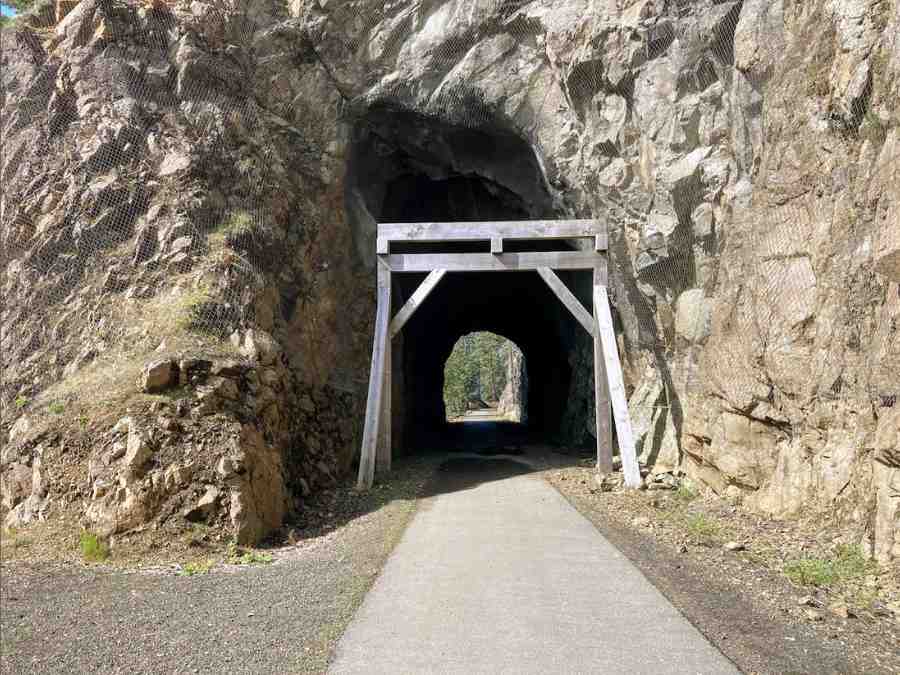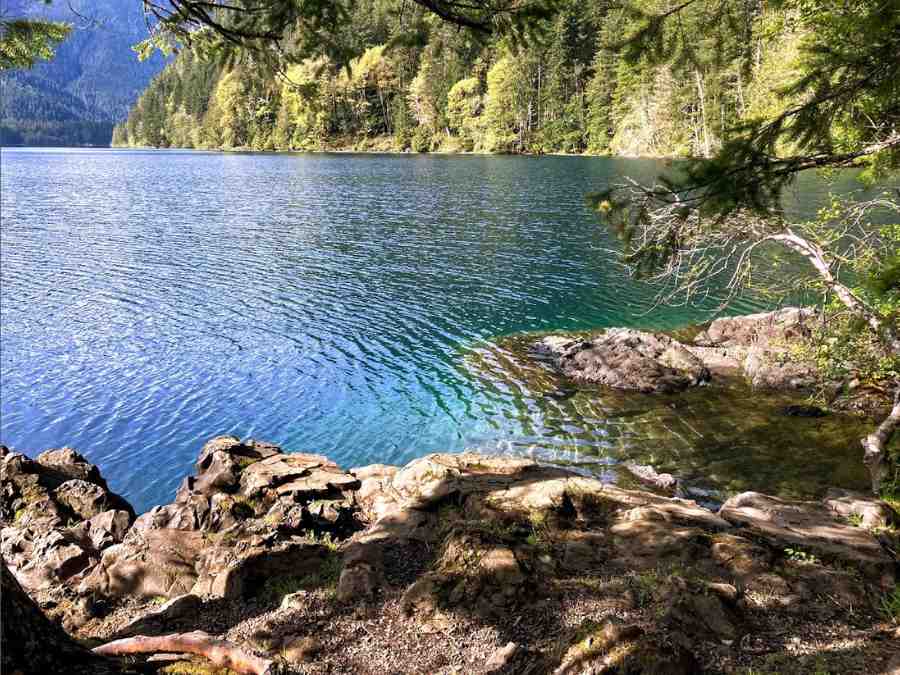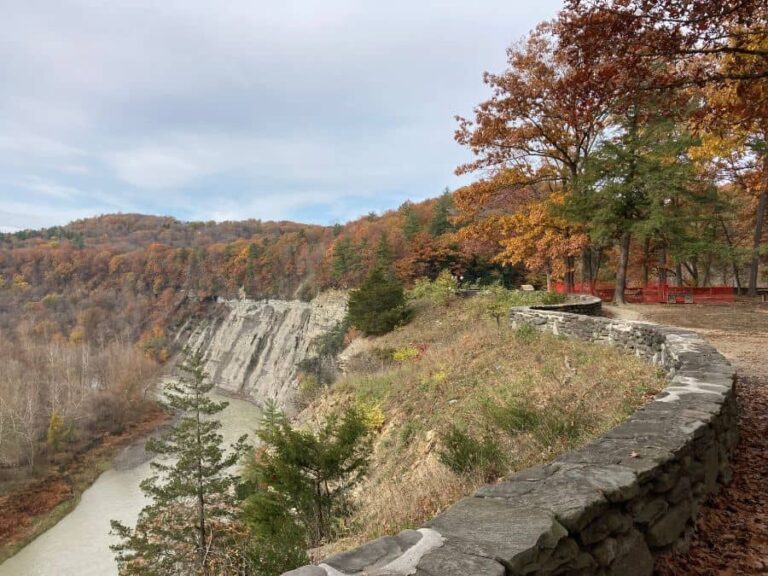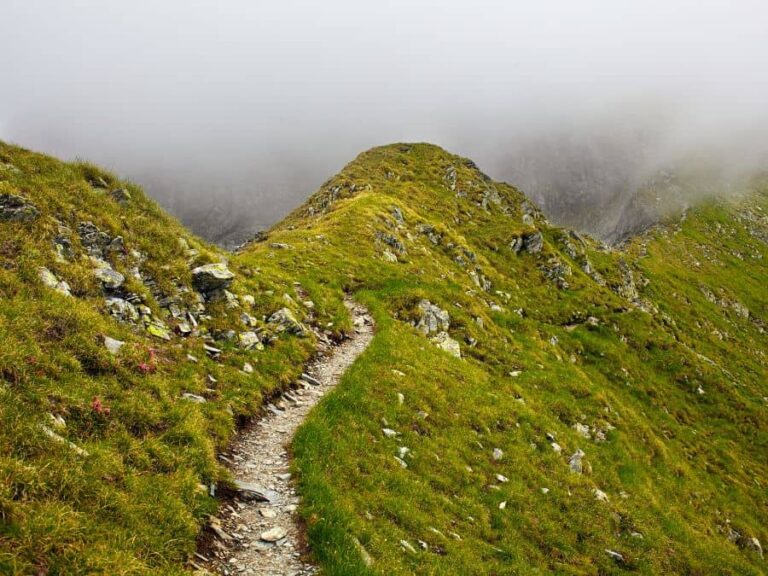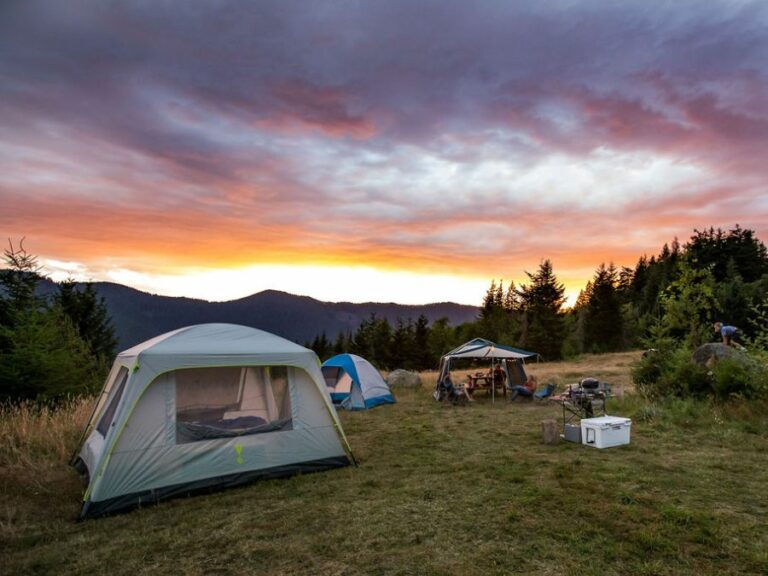Four Hikes in Four Days at Olympic National Park
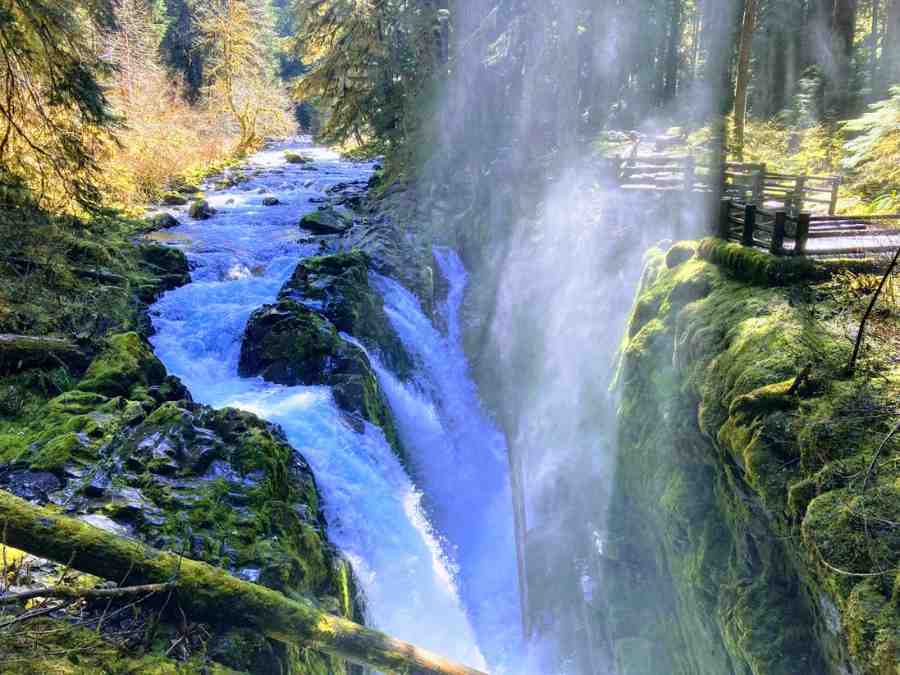
There’s no place in America quite like Olympic National Park. Close to a million acres and crisscrossed by hundreds of miles of hiking trails, the park preserves ecosystems ranging from temperate rainforest to glacier-encrusted peaks.
For a hiker, it’s an absolute bucket list destination, and getting to explore four of the best hiking trails in Olympic National park over the course of as many days was—at least for this hiker—a once in a lifetime experience.
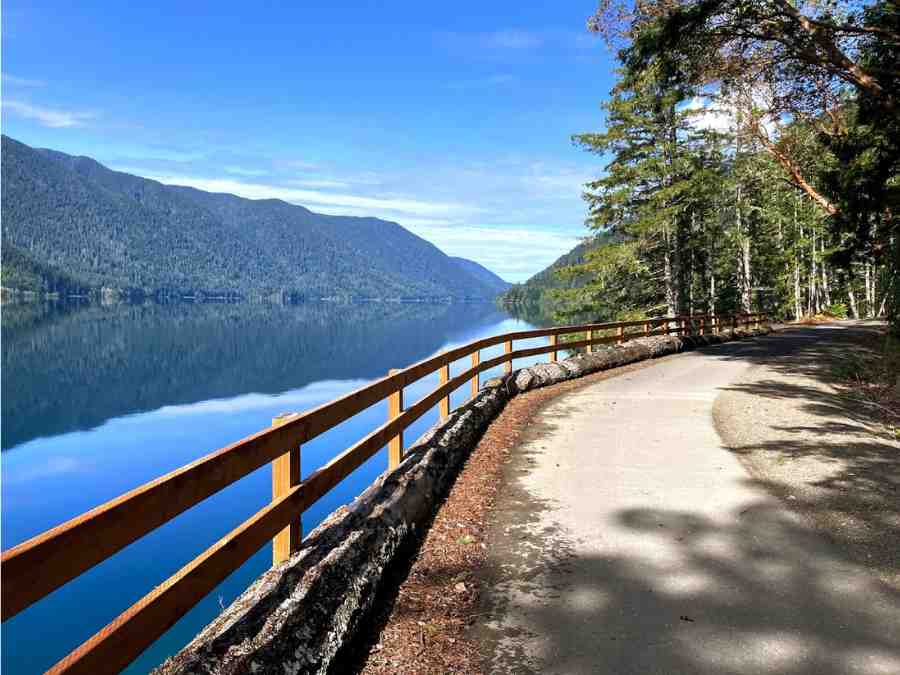
Getting There
Home base for this adventure was Lake Crescent, near the northern edge of the park and just shy of three hours from Seattle-Tacoma International Airport. It’s a beautiful drive, even an enjoyable one if you’re not too jet-lagged to appreciate it, which quickly leaves the city behind and traces the shorelines of Squamish Harbor and Discovery Bay amid long stretches of woods and sparsely-populated towns.
The coastal town of Port Angeles is the last of what could reasonably be called civilization before heading into the mountains, which rise almost immediately from the narrow strip of coastline. U.S. Route 101 plunges into the mountains and skirts the shoreline of Lake Crescent, providing some spectacular viewpoints and leading to Lake Crescent Lodge.
Admittedly, a stay at Lake Crescent Lodge, with its charming sunroom, towering fireplace and casual fine dining restaurant, is anything but “roughing it”. For someone accustomed to sleeping in tents and trailside leant-tos, it’s downright luxurious.
But on this trip, a warm bed and a cocktail or two by the fire each evening provided a welcome comfort between long days spent on the trail.
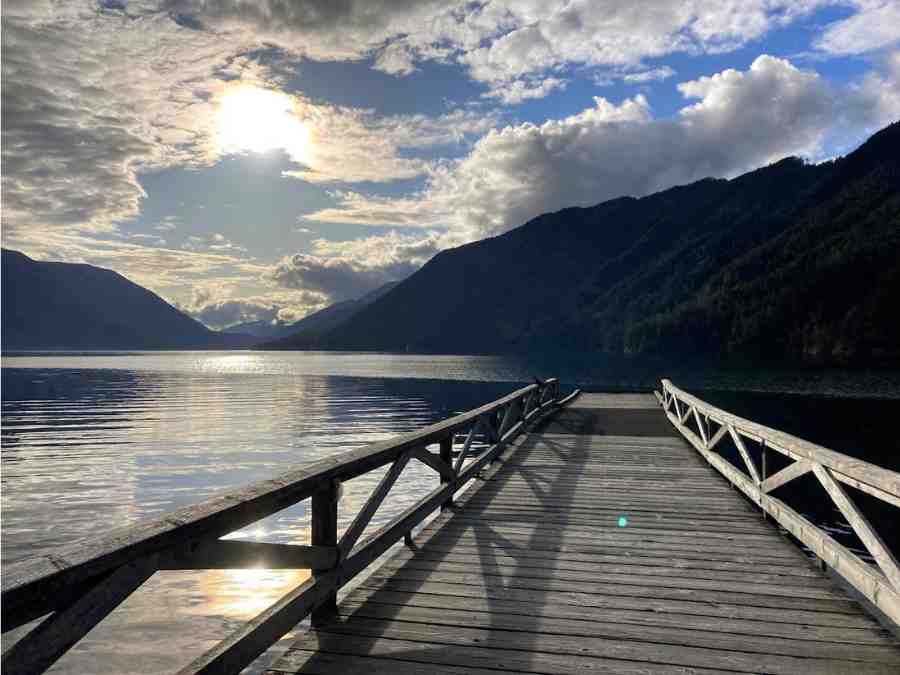
Hike #1: Spruce Railroad Trail
My visit happened to be in early May, on what turned out to be only the second weekend after the lodge reopened for the season. Having spent a long winter doing little in the way of hiking, starting day one with an easy hike felt like a wise move. The Spruce Railroad Trail provided just that, along with some pretty great bang for your buck when it comes to scenery.
Transformed from a former railroad line that hugs Lake Crescent’s northern shoreline, the Spruce Railroad Trail is a 5-mile one-way hike that makes for a picturesque trek between the lake and the mountains. The going is mostly flat, the surface ranges from asphalt to gravel to natural earth. The view across the lake to the mountains that descend dramatically into its depths are exceptional.
Highlights of the trail include a pair of tunnels through the mountains themselves, and a footbridge across Devil’s Punchbowl, a popular summer swimming hole that was too chilly to chance during early May.
The skies, somewhat atypical of springtime in Washington, were perfectly clear. The water, over 600 feet deep and tinted a seemingly impossible shade of blue, was so calm that the line between the mountains and their mirrored reflections seemed almost to disappear. The only disturbance was the occasional dimpling of the surface by the lake’s resident rainbow trout.
Returning to the lodge after a 10-mile round-trip hike left me only wanting more. After a good meal, a strong Old Fashioned or two and a good night’s sleep, it would be time to get back out there.
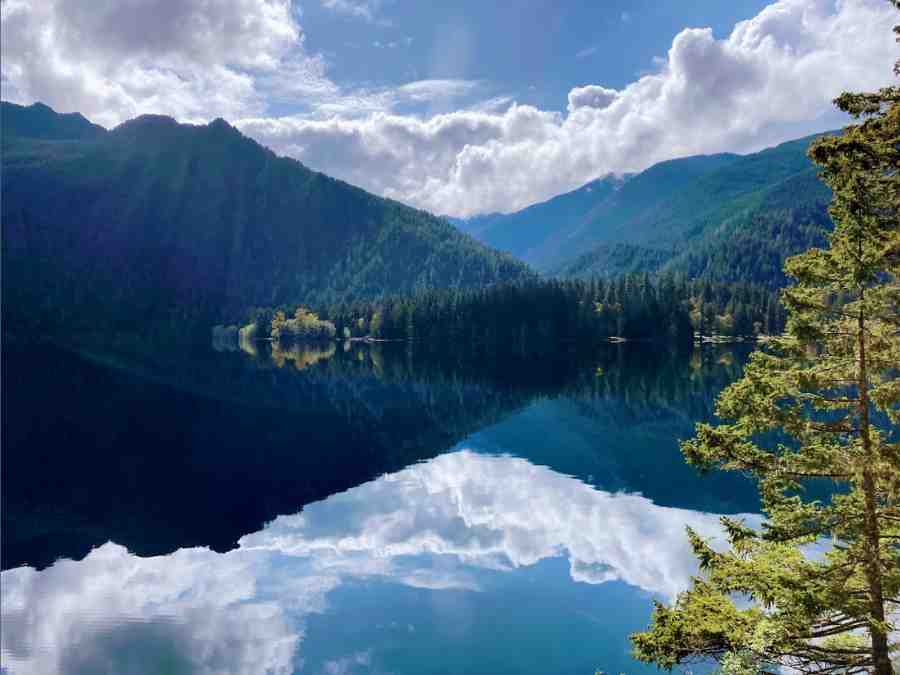
Hike #2: Mount Storm King Trail
There’s nothing quite like waking up with legs dismayingly sore after what was supposed to be an easy starter hike. So it goes. Time to climb a mountain anyway.
There are a handful of rugged mountain hikes in the immediate Lake Crescent area, and the Mount Storm King Trail, with expansive views and trailheads walkable from the lodge, is a popular one. It’s a 2.2-mile ascent that gains around 2,000 feet in elevation, and it’s a thigh-burner.
The Mount Storm King Trail starts as a spur off the Marymere Falls Trail, which begins right at the lodge. Visiting the falls adds 1.8 miles round-trip to the hike, but it’s well worth it. Not only does it delay the inevitable climb, but it also provides a welcome view of the falls, which cascades 90 feet down a mossy ravine amid groves of waist-high sword ferns.
After a quick detour to the falls, it’s time to ascend. Though not a long hike, the trip to Mount Storm King’s summit and back is a challenging one, relentlessly gaining elevation through a series of switchbacks. One of the real pleasures of this hike is watching the forest change as you climb, with lush, moss-laden old growth evergreens slowly giving way to smooth-barked madrone and manzanita.
There are a couple of really excellent viewpoints along the way, all of which provide an excuse to catch one’s breath. But the pinnacle of the mountain is really its crown jewel. Following the final push using the ropes that have been provided for handholds—this final section is unmaintained, and those who climb it do so at their own risk—the summit provides a head-swimming panoramic view with Lake Crescent far below.
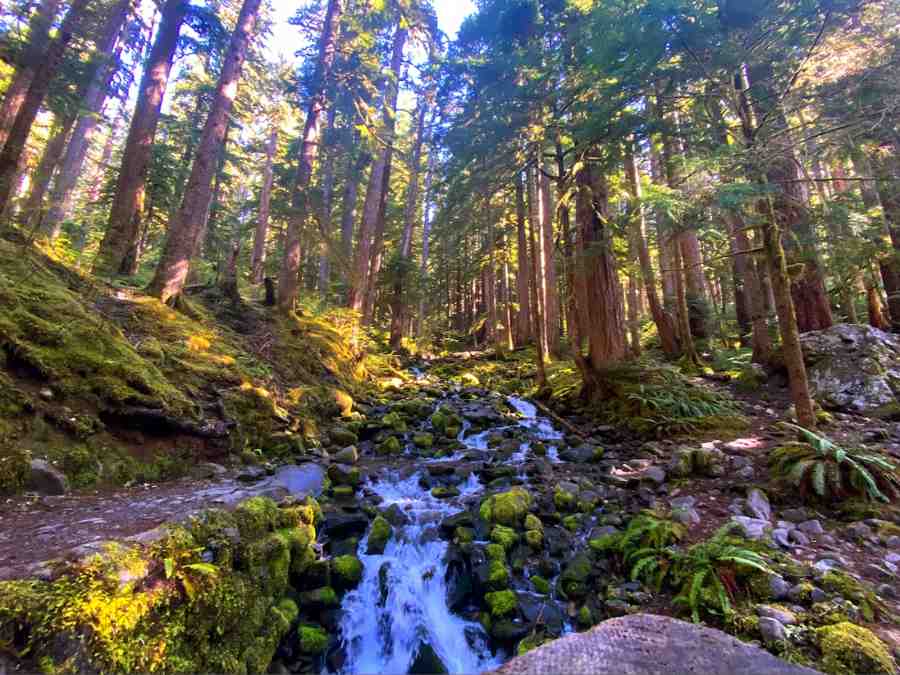
Hike #3: Sol Duc River Trail
If I thought I was sore after the first day of hiking, I had no idea. Mount Storm King put a hurtin’ on me, but after a slow morning of hobbling around Lake Crescent Lodge, it was time to get ready to hit the trail yet again. Fortunately, the hike planned for day three on the Sol Duc River Trail is far less strenuous.
That is, it’s less strenuous if you don’t intend to tread every mile of it. The Sol Duc River Trail ultimately reaches deep and high into the Olympic Range, for a 17-mile out-and-back hike that includes links to numerous other trails. It’s a great place for backpacking, and it becomes increasingly steep and challenging as it goes.
But the first few miles are surprisingly gentle, and also provide some serious knock-you-off-your feet scenery that includes old-growth fir, hemlock and spruce forests as well as the famed Sol Duc Falls. Plunging 48 feet through a narrow, rocky gorge, Sol Duc Falls is a real stunner. A footbridge spans the Sol Duc River just below the falls, providing a perfect view and a good soaking in the river mist.
Just 0.8 mile from the trailhead at the end of Sol Duc River Road, the falls are as far as many hikers go. But do yourself a favor and keep going. Past the trail shelter that marks the side-tral to the falls, the Sol Duc River Trail turns gently uphill, gaining elevation almost imperceptibly as it ascends through pristine forests.
The farther you go, the narrower the trail gets and the less likely you are to encounter other hikers. In early May, certain areas of the trail still had a few remaining patches of snow that crunched underfoot along the way. Ultimately, a 6-mile out-and-back section of the Sol Duc River Trail turned out to be one of the most beautiful experiences in Olympic.
A couple of other spots are worth a look along the Sol Duc River Road on your way to or from this trail. Ancient Groves is a stunning 0.5-mile walk through untouched old-growth forest, and Salmon Cascades is a popular overlook from which migrating salmon can be seen leaping upriver in fall and winter.
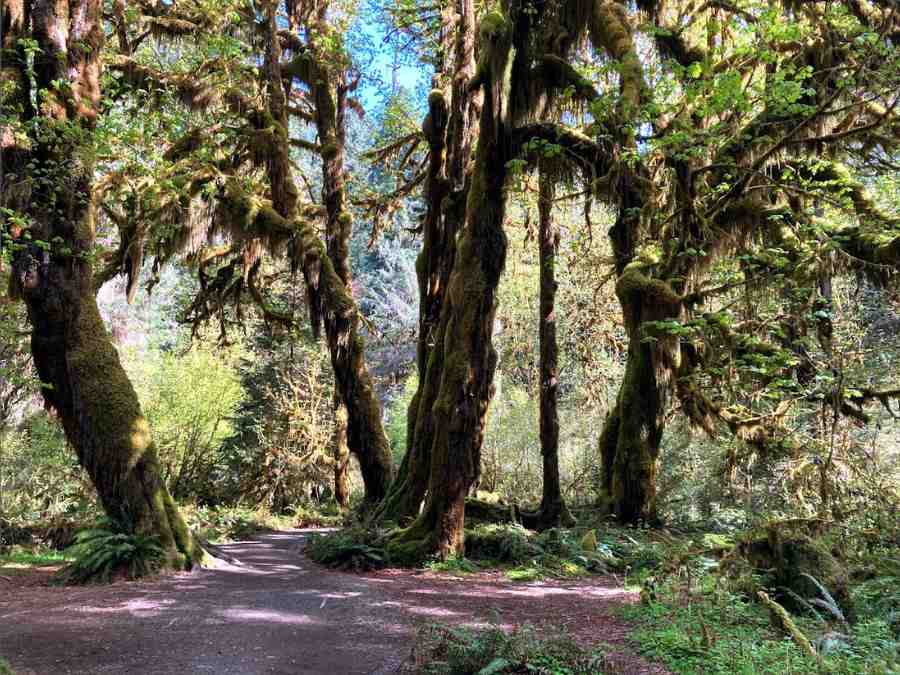
Hike #4: Hoh Rainforest
There’s something to be said for saving the best for last, and Hoh Reainforest certainly deserves to be saved and savored. If you’ve seen pictures of Olympic National Park it’s probably this part, the lush old-growth forest with ancient trees dripping with moss. An average of 12 feet of annual precipitation keeps this area perpetually damp and vividly green.
The start of the Hoh River Trail is at the end of Hoh Valley Road, right behind the Hoh Rainforest Visitor Center. It’s less than 20 miles from Lake Crescent as the crow flies, but because there are so few roads in the interior of Olympic National Park, getting from A to B requires a circuitous 90-minute drive. Worth every mile, I assure you.
Upon leaving the parking lot, the trail forks almost immediately, with the left fork taking you on a 0.8-mile loop through the Hall of Mosses. It’s a low-exertion stroll through a beautiful little section of rainforest, but it’s also one of the most popular loops in the park. Even during the shoulder season, it was swarmed with tourists, and I was eager to get onto the main trail and away from the crowds.
The Hoh River Trail proper follows its namesake river deep into the Hoh Rainforest. You can expect to see a good number of folks out there enjoying the remarkable scenery, but as is typical of many trails, the farther you go the fewer and farther between other hikers become.
Five Mile Island, an appropriately named clearing alongside the river 5 miles in from the trailhead, offers a great opportunity to stop for trail lunch and dip your feet in the icy waters of the Hoh River. I refilled my Nalgene bottle from the crystal-clear water, fresh off the Hoh Glacier many miles above.
This is a turning-back point for some, but it’s worth it to keep going. Hoh Rainforest only gets thicker, wilder and more beautiful the farther you go. Towering groves of sitka spruce, western hemlock, douglas fir and western redcedar loom overhead, many of them over 10 feet in diameter. Dappled sunlight drifts through the thick canopy far above, casting the forest floor in an almost otherworldly shade of green. The whole hike is lovely, but the really good stuff starts six or seven miles in.
My recommendation is to take your time and give yourself a whole day to pick your way through this ancient forest. There are even campsites along the way for backpacking, and the trail ultimately stretches 17.4 miles to Glacier Meadows. A warm room at the lodge will be waiting when you return.

Blair Witkowski is an avid watch nut, loves pocket knives and flashlights, and when he is not trying to be a good dad to his nine kids, you will find him running or posting pics on Instagram. Besides writing articles for Tech Writer EDC he is also the founder of Lowcountry Style & Living. In addition to writing, he is focused on improving his client’s websites for his other passion, Search Engine Optimization. His wife Jennifer and he live in coastal South Carolina.

